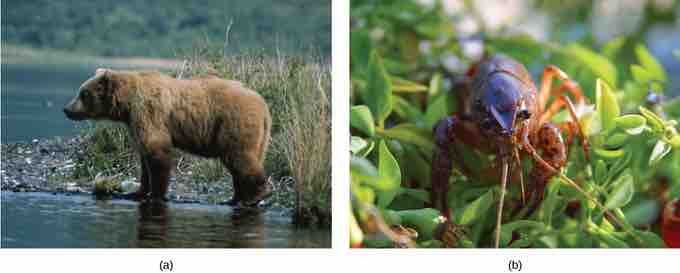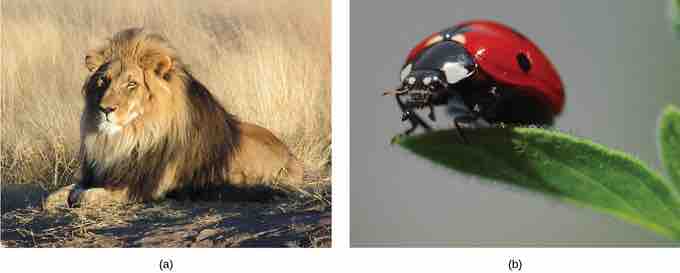Herbivores, Omnivores, and Carnivores
Herbivores are animals whose primary food source is plant-based. Examples of herbivores include vertebrates like deer, koalas, and some bird species, as well as invertebrates such as crickets and caterpillars . These animals have evolved digestive systems capable of digesting large amounts of plant material. The plants are high in fiber and starch, which provide the main energy source in their diet. Since some parts of plant materials, such as cellulose, are hard to digest, the digestive tract of herbivores is adapted so that food may be digested properly. Many large herbivores have symbiotic bacteria within their guts to assist with the breakdown of cellulose. They have long and complex digestive tracts to allow enough space and time for microbial fermentation to occur. Herbivores can be further classified into frugivores (fruit-eaters), granivores (seed eaters), nectivores (nectar feeders), and folivores (leaf eaters).

Examples of herbivores
Herbivores, such as this (a) mule deer and (b) monarch caterpillar, eat primarily plant material. Some herbivores contain symbiotic bacteria within their intestines to aid with the digestion of the cellulose found in plant cell walls.
Omnivores are animals that eat both plant- and animal-derived food. Although the Latin term omnivore literally means "eater of everything", omnivores cannot really eat everything that other animals eat. They can only eat things that are moderately easy to acquire while being moderately nutritious. For example, most omnivores cannot live by grazing, nor are they able to eat some hard-shelled animals or successfully hunt large or fast prey. Humans, bears, and chickens are examples of vertebrate omnivores; invertebrate omnivores include cockroaches and crayfish .

Examples of omnivores
Omnivores such as the (a) bear and (b) crayfish eat both plant- and animal-based food. While their food options are greater than those of herbivores or carnivores, they are still limited by what they can find to eat, or what they can catch.
Carnivores are animals that eat other animals. The word carnivore is derived from Latin and means "meat eater." Wild cats, such as lions and tigers, are examples of vertebrate carnivores, as are snakes and sharks, while invertebrate carnivores include sea stars, spiders, and ladybugs . Obligate carnivores are those that rely entirely on animal flesh to obtain their nutrients; examples of obligate carnivores are members of the cat family. Facultative carnivores are those that also eat non-animal food in addition to animal food. Note that there is no clear line that differentiates facultative carnivores from omnivores; dogs would be considered facultative carnivores.

Examples of carnivores
Carnivores such as the (a) lion eat primarily meat. The (b) ladybug is also a carnivore that consumes small insects called aphids.